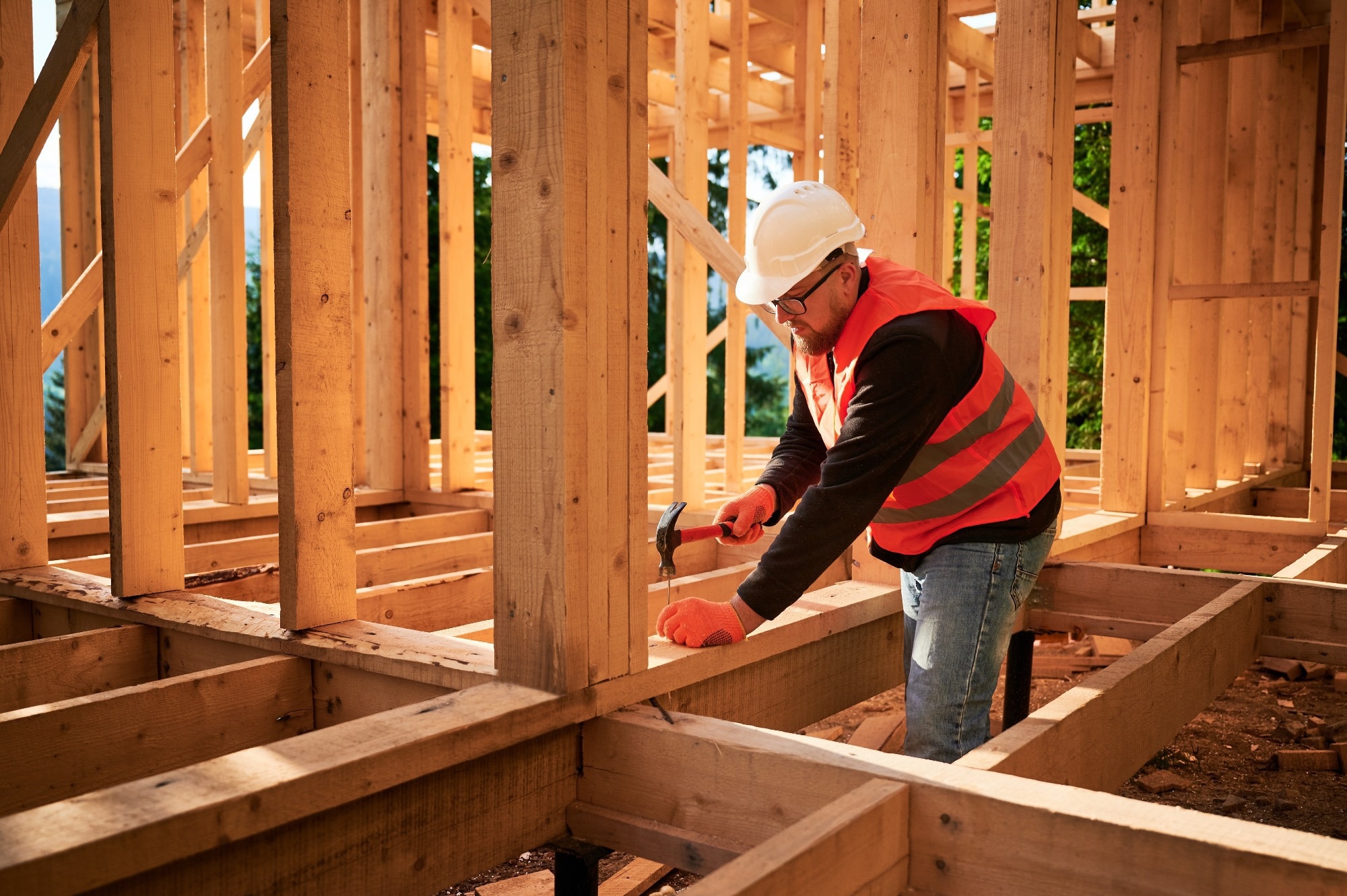Researchers have demonstrated that wooden nail connections, when optimized for factors like nail diameter, sheathing material, and spacing, can significantly enhance the shear performance of timber structures, offering a viable, sustainable alternative to metal fasteners.
 Study: Lateral Resistance Performance of Wood-Frame Shear Walls with Wooden Nail Connections: Experimental and Finite Element Analysis. Image Credit: anatoliy_gleb/Shutterstock.com
Study: Lateral Resistance Performance of Wood-Frame Shear Walls with Wooden Nail Connections: Experimental and Finite Element Analysis. Image Credit: anatoliy_gleb/Shutterstock.com
A recent study published in the Journal of Bioresources and Bioproducts explored this potential through a series of monotonic loading tests. The research focused on how variables such as sheathing panel material (oriented strand board [OSB] and structural plywood [SP]), panel thickness (9.5 and 12 mm), nail diameter (3.7 and 4.7 mm), spacing (50 and 100 mm), and cap configuration influence joint performance.
Background
Modern timber construction often relies on light wood-frame systems due to their use of standardized dimensional lumber and ease of prefabrication. These benefits help streamline construction and reduce labor costs. These systems also offer environmental advantages, such as lower foundation loads and reduced energy use in material transport.
Historically, metal fasteners like smooth nails, angle brackets, and screws have been the go-to for connecting wood components. However, their long-term durability can be compromised in environments with fluctuating humidity and temperature. In contrast, densified wooden nails have emerged as a more sustainable alternative, offering continuous production capabilities and better environmental compatibility.
By fine-tuning high-density thermosetting resin formulations and pneumatic gun technology, wooden nails can form strong chemical and mechanical bonds with wood. This enables automated assembly and enhances overall production efficiency. The study set out to assess whether these eco-friendly connectors could hold their own in structural applications like wood-frame shear walls.
Methods
The research team used structural-grade spruce-pine-fir (SPF) lumber (38 × 89 mm) and compressed beech wooden nails, both with and without caps. Nail configurations included 4.7 × 58 mm (with caps) and 3.7 × 60 mm or 4.7 × 65 mm (without caps).
Test specimens were designed according to Chinese National Standards for timber structures and consisted of SPF lumber elements (240, 250, and 340 mm in length) paired with 300 × 100 mm sheathing panels. These were assembled using a pneumatic wooden nail gun operating at 0.6–0.8 MPa. Mechanical testing was conducted using a universal testing machine rated at 100 kN.
To supplement physical testing, a full-scale finite element model was developed using OpenSees to simulate shear wall behavior. The model used 4.7 mm diameter wooden nails without caps, based on earlier test results, and evaluated performance across different sheathing types, thicknesses, and under both monotonic and low-cycle reciprocating loads.
Results and Discussion
Three main failure modes were observed: tearing and warping of sheathing panel fibers, shear failure of wooden nails, and fiber tearing in SPF lumber. Nails often fractured at the junction between sheathing and framing members, typically breaking into two or three segments.
Key findings showed that larger nail diameters and thicker sheathing panels led to higher load-bearing capacity. SP sheathing outperformed OSB in terms of both peak load and joint stiffness. The inclusion of nail caps and closer nail spacing further improved shear resistance, with larger-diameter nails showing the best overall performance.
These results were largely attributed to the increased contact surface between the nail, sheathing, and framing material. Thicker panels also allowed for deeper embedment, enhancing the strength of the dowel bearing zone.
Conclusion and Future Outlook
This study offers strong evidence that carefully engineered wooden nail connections can enhance the shear performance of timber joints. It also demonstrated, through full-scale finite element modeling, how different sheathing configurations impact the lateral resistance of wood-frame shear walls.
However, the research was limited to monotonic loading; additional studies are needed to assess how these connections perform under cyclic or extreme conditions. Understanding their hysteretic behavior will be key to fully validating their use in structural applications.
Future work should also explore other sustainable fasteners, such as wood-based adhesives, and refine modeling techniques to account for dynamic loads, material aging, and moisture effects. These steps will be essential for advancing the role of wood-based connectors in resilient, energy-efficient building systems.
Journal Reference
Wang, S. et al. (2025). Lateral Resistance Performance of Wood-Frame Shear Walls with Wooden Nail Connections: Experimental and Finite Element Analysis. Journal of Bioresources and Bioproducts. DOI: 10.1016/j.jobab.2025.04.002, https://www.sciencedirect.com/science/article/pii/S2369969825000362
Disclaimer: The views expressed here are those of the author expressed in their private capacity and do not necessarily represent the views of AZoM.com Limited T/A AZoNetwork the owner and operator of this website. This disclaimer forms part of the Terms and conditions of use of this website.